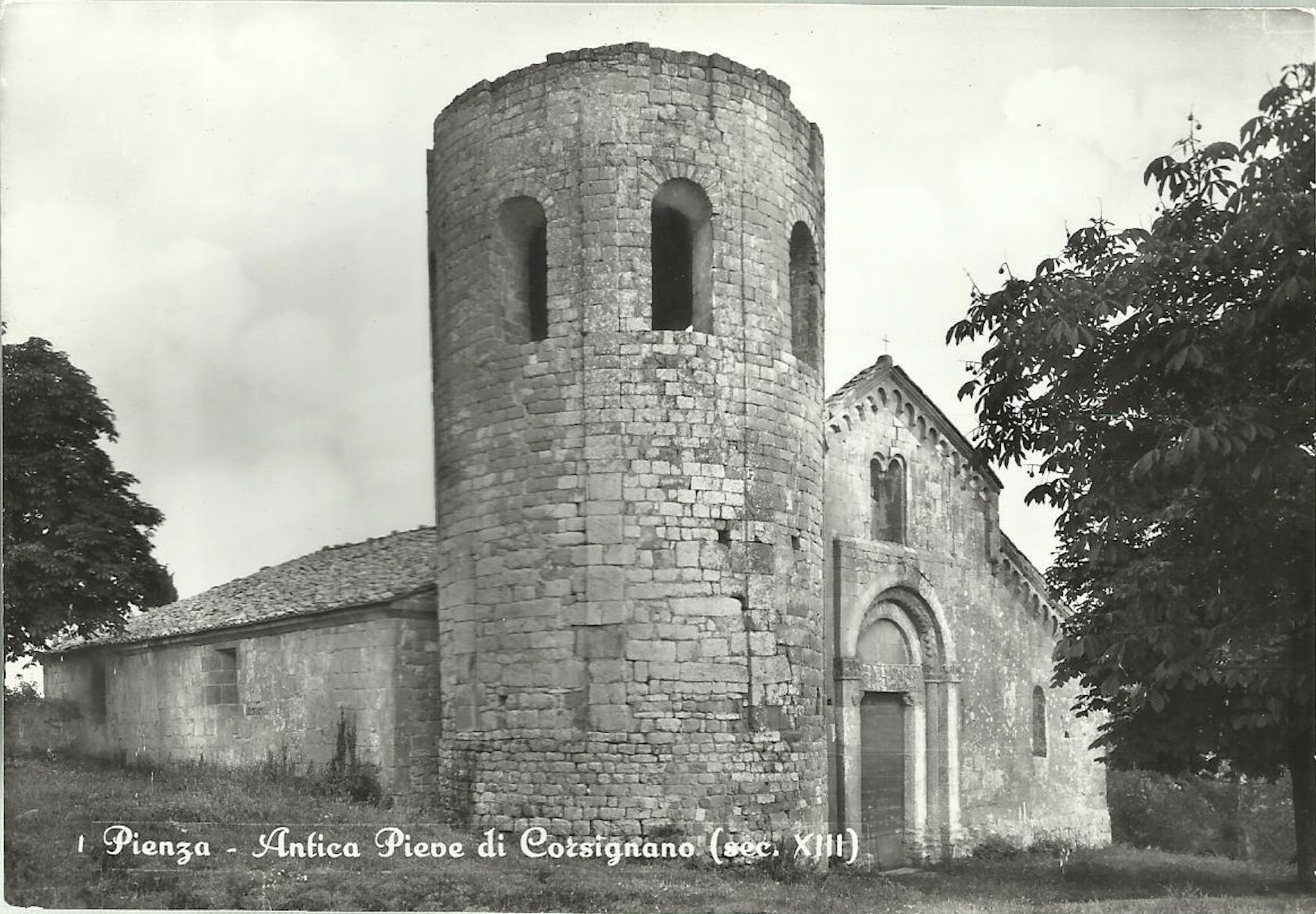
The Old Parish Church of Corsignano (Pienza)
(eleven-twelfth century AD)
An old parish church, a baptismal font, a clearing just above the cultivated land. Here, everything still has a sacred and magical aura. In this place, whose primordial and original nature can be sensed even today, popular devotion has forever fixed the centre of the rural life, both civic and religious, and not only that. In fact, precisely above the low, earthyly parish church, almost vertically, pope Pius II built the city that bears his name, Pienza, and there erected his cathedral, white as marble, bright, heavenly. But down here, so to speak, the connection between the salvation of the body and that of the soul can still be felt. A salvation that seems to be condensed in the forked tail of the sirens and the water that flows nearby. The parish church emerges from the fields still full of pagan symbolism: strange, terrifying monsters, but tangible nontheless, carved out of stone to keep away other demons that could bring sin with them.
Here, real life – which has stayed intact through the centuries and is made of solemnities and gatherings – looks like the image of spiritual life, not vice versa. Among the sirens and the serpents, however, an image remains in our memory more than others: the female figure that forms the column of the bifora of the cylindrical bell tower. «In it – Marco Capitoni remembers – the people who have lived here for generations see the fruitful, life-bearing force not only of the ancients matres, but also the power and pride of our massaie. The church, as we still remember in our families, has marked our days and our lives with the time of prayer and gathering. The water of the font has for long been the concrete sign of celebration and purification, not only moral or symbolic, and also of rest from the labour of the vineyard».
Beneath this long-lived, unspoilt sacrality, at last, lies a baptism story, from which the symbolism of the grapevine and wine appears. And certainly it won’t be by chance that the story of Melampo was engraved in the stone of the church: he was the first to introduce in ancient Greece the cult of Dyonisus.
